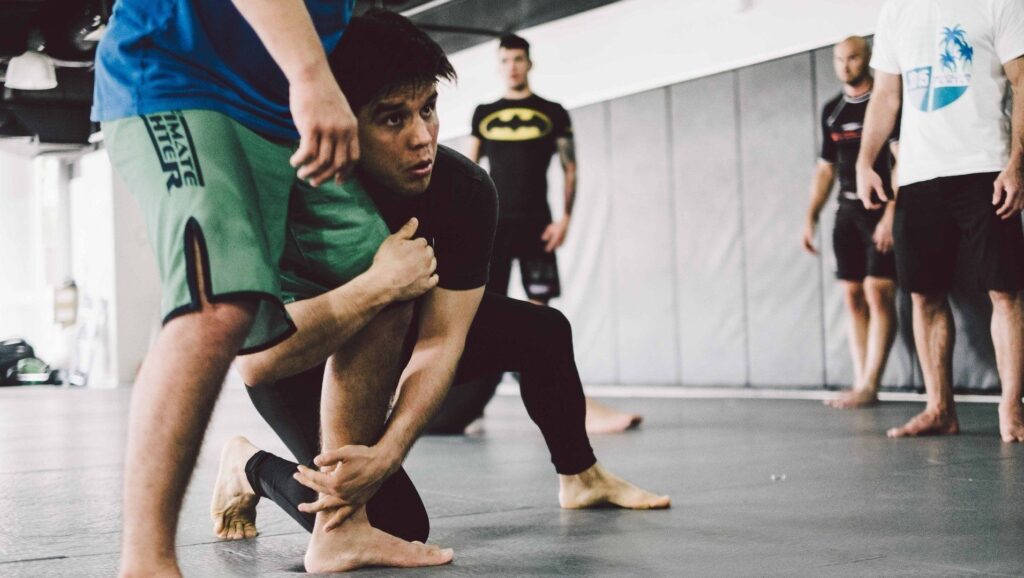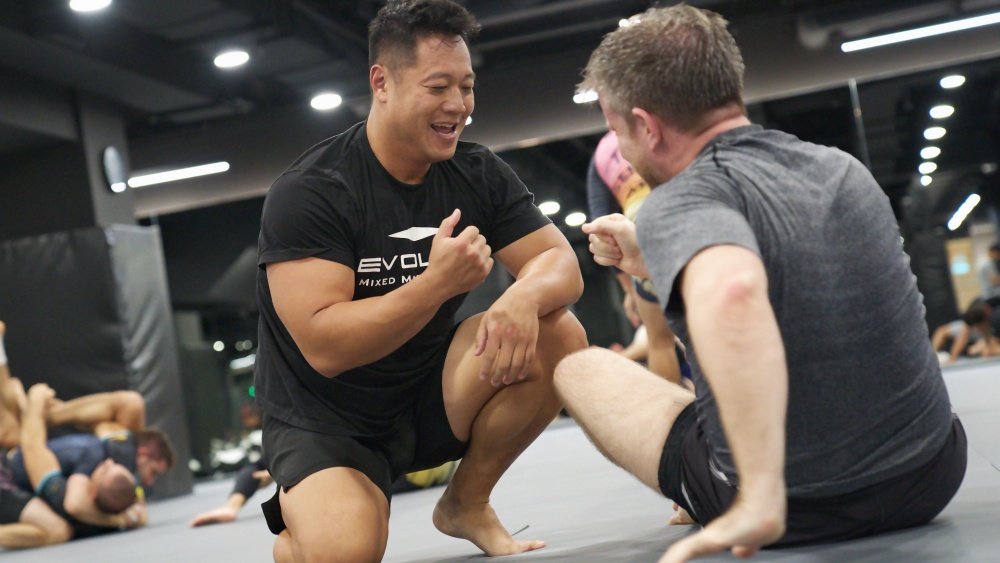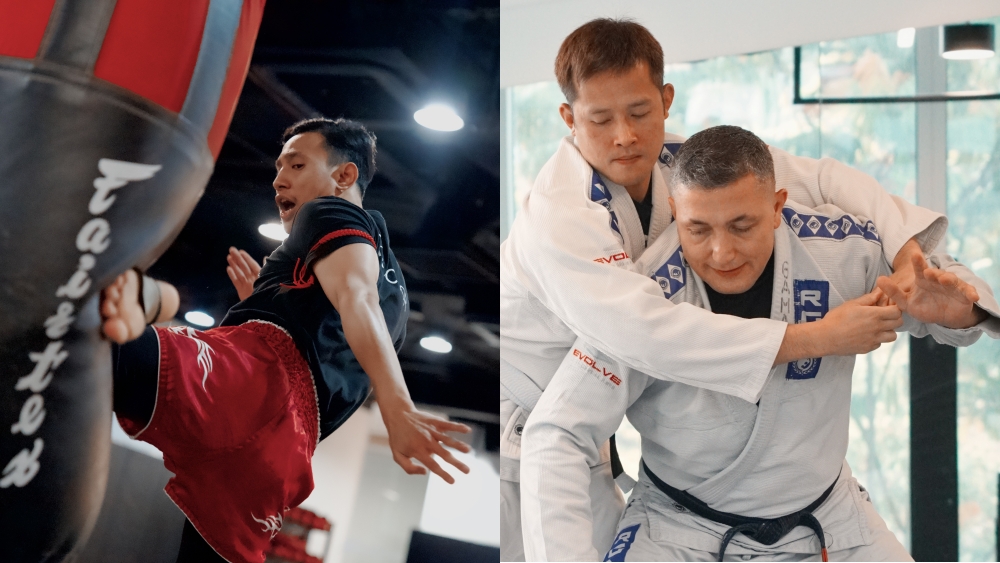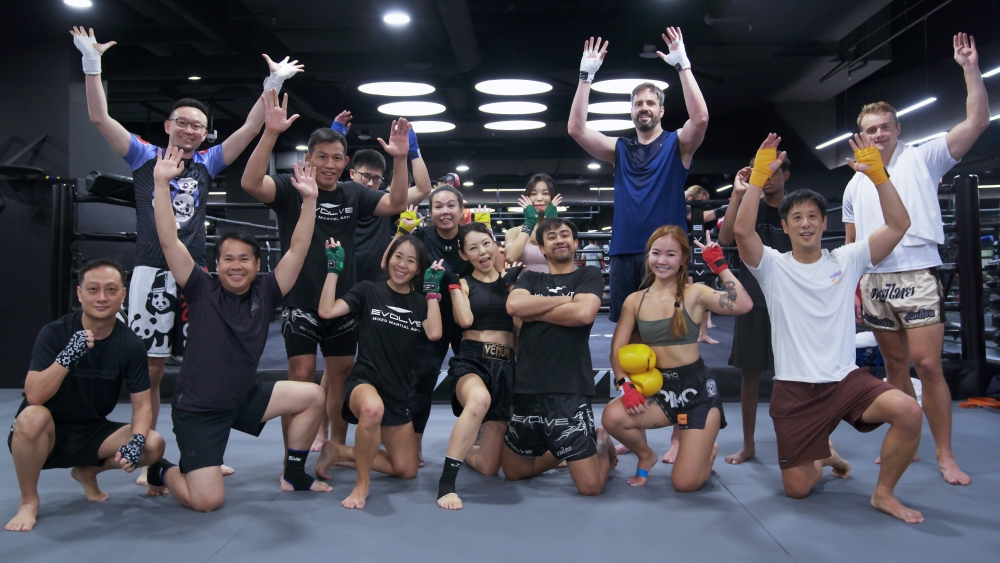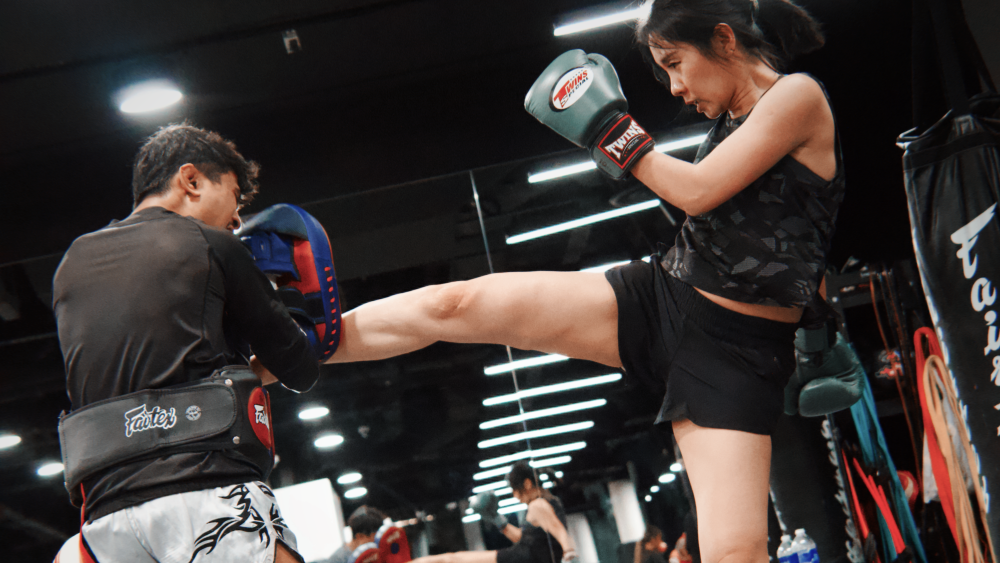In the world of martial arts, the takedown refers to a category of moves that includes sweeps, trips, throws, and tackles – really anything that takes your opponent off of their feet and puts them on the ground. Specific arts like Brazilian Jiu-Jitsu, Judo, and wrestling, have incredibly advanced methods of takedowns that have been developed over decades, and in some cases, centuries. While a takedown can be as elaborate or as simple as a situation allows or demands, the fundamental principles of balance and shifting the center of mass can never change – no matter what is happening, the goal is still to take your opponent’s two legs out from underneath him in some way.
Most people have been a practitioner or a fan of some sort of competition or another that involves taking the opponent to the ground, martial arts, rugby, American football, etc., and have at least a basic idea of how one could perform a takedown or tackle. Here we will build upon this knowledge and delve further into what is happening behind the scenes to make these techniques so efficient.
Once we cover the basic science behind how one puts another onto the ground, we will take a quick look at how the force of the takedown is calculated and some examples.
The Basic Premise Of A Takedown
Jason Thalken is a martial artist, has a Ph.D. in physics, and wrote the book Fight Like a Physicist: The Incredible Science Behind Martial Arts. In the book, he pairs down the science of takedowns into a single simple concept. He asserts that the various takedown methods all derive from a very basic premise – moving the center of your opponents mass away from its supports (typically the legs), or moving those supports away from the center of mass. Once either of those is accomplished, your opponent must either adjust or go to the ground. The various techniques almost always include a particular method of either pulling, grabbing or moving the opponent that prevents them from correcting their balance. This “method” stops him from re-aligning his center of mass and supports — think off-balancing your opponent and then trapping the legs so he cannot recover out of the fall (this simple concept underpins most BJJ transitions as well).
Let’s use the basic hip throw as a method to analyze this concept in action. There are various methods of doing this depending on the sport or situation, so let’s just deal with the universals. Your opponent will likely be upright and facing you, meaning that his center of gravity or mass is going to approximately be between his spine and his navel, about at waist height. The first step will be to get into range and grab onto him — this is done in order for you to be able to affect him and shift that center of gravity. The next step will be to pull your opponent in one direction or another to force him off balance. While the opponent is off balance, he will try to either move his legs or body in some way to realign the mass and supports – simultaneous with that moment you will drop a bit lower and swing one of your hips into him, allowing you to place yourself under his center of mass. Once your pelvis is cutting off the connection between his mass (body) and supports (legs), it is merely a matter of following through with the pull & turn, and they will go flying.
A typical wrestling takedown or American football tackle can be summarized just as quickly. In both, you get lower than the opponent’s center of mass, place yourself underneath his weight as you simultaneously pull his supports out from underneath him. Then depending on your goal, you drive through, or drive and twist (or a whole bunch of other nuanced techniques) taking him completely off balance and ensuring his supports cannot get back underneath him.
It is an incredibly basic concept, but once you learn to look at the science behind why the opponent goes to the ground, you can begin to implement and force takedowns in numerous situations. A good understanding of body mechanics has infinite possibilities for the creative martial artist.
Torque
The basics of a takedown are simple enough to comprehend. How one generates great force into a sweep, tackle, or throw can get a bit more complicated. There are some terms you will need to know:
- Center Of Mass: Also called the center of gravity, is the “position defined relative to an object or system of objects” or the “centroid” on the human body this is typically just above where the legs meet the upper body.
- Acting Force: If you have pulled an opponent off balance, the acting force will be gravity directing the force straight down from his center of gravity – if the center of gravity is over the ground and not the legs, the body will simply tip over. During a throw or tackle, you will be exerting the acting force in conjunction with gravity.
- Lever Arm: The size of the lever arm is the amount of leverage you have with the force you exert. It is an invisible line that runs from where the person is pivoting, and intersects with the direction of the acting force. It is officially defined as the perpendicular distance from the axis of rotation/pivot point to the destination of the line of action of the force. In the case of an off-balance person with no other acting forces, that destination is the spot on the ground directly underneath his center of mass – since the only acting force is gravity.
- Pivot Point: This can be the hips if someone is bending at the waist. In the case of pulling someone off balance while they remain upright, this will be the feet.
- Newton: The Standard International (SI) unit of force. One newton is the force required to cause a mass of 1 kilogram to accelerate at a rate of 1 meter per second squared.
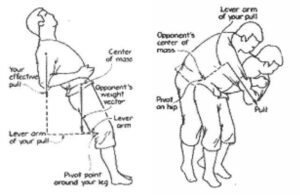
Now the torque, or energy of the throw, is determined by multiplying the lever arm by the line of the force and the pivot point. The torque of the throw must overcome the resistant given by the opponent. Remember the more off balance someone is, the longer the lever arm will be. This means that the more you can move his center of gravity away from the supports the more energy your throw will have.
This is just the scientific way of saying the more off balance you make him, the easier he will fall.
Different techniques are all simply different methods of playing with and affecting these forces.
Torque And Impulse-Momentum in Action
To learn more about the science of Impulse-Momentum check out our article regarding the science of punching here. The force of an opponent’s body hitting the ground is going to be calculated the same way, with the ground acting as an immovable object that returns the force of the strike back into the falling body.
Once torque affects the opponent, it creates a certain amount of momentum. This momentum, the velocity of the body through the air coupled with its mass, is the amount of force being driven into the ground (and back into the body). Obviously, different ground surfaces will return different amounts of force back into the falling body.
An interesting study regarding the newtons generated by a throw was conducted in 2006 and has some interesting findings that are worth sharing here. The study tracked the height, weight, and skill level of the participants and then measured the power they generated with certain throws. The results of the study allow us to analyze some of the science we talked about in action.
- A shoulder throw was able to generate an average force of 120.4 newtons over 0.74 seconds, with an average Impulse of 89.0 newton-second.
- The hip throw (with the thrower landing on top of the thrown) generated an average force of 158.9 newtons over 0.63 seconds with an average Impulse of 100.1 newton-seconds
- The leg throw, or power trip (osoto-gari), had an average force of 156.3 newtons over 0.73 seconds with an average Impulse: 113.0 newton-seconds
Interestingly enough you can see the shoulder throw, which brings the opponent highest off the ground, generated the least amount of force. This is due to the fact that the movement has a large amount of forward momentum even after contact – it doesn’t abruptly stop in the same way as the other two which allows more of the force to dissipate. It is the abruptness of the impact and the bodies movement being stopped that generates the impulse.
Now that you know some of the basic science behind takedowns, go and use it to your advantage. Having some insight into these basic concepts can help you understand why a certain takedown you are attempting may not be working and it might even help you come up with new takedowns of your own.
You may also like:
